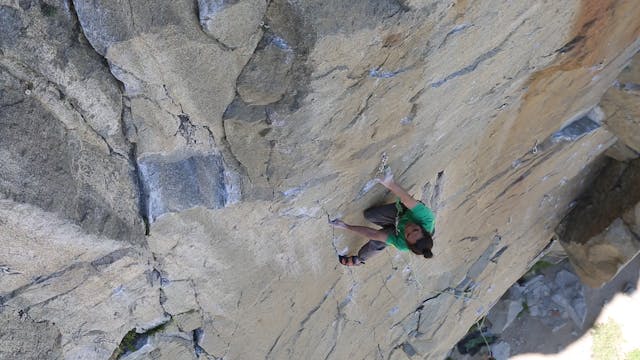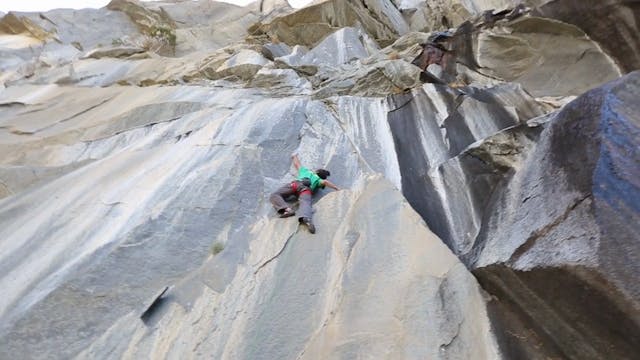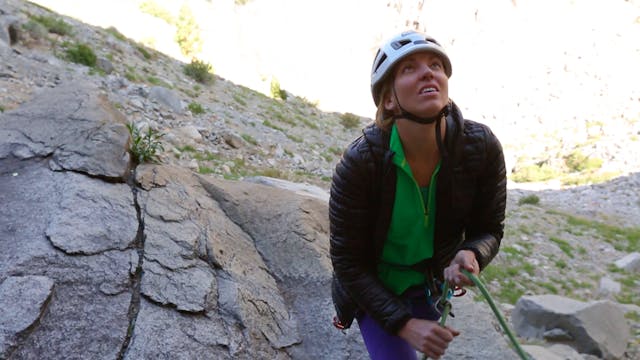Sport Climbing: 6. Falling While on Lead
Sport Climbing
•
2m 50s
In this video we review falling considerations for the lead climber in sport climbing.
Sport climbing presents a unique opportunity for the climber to experience, practice and learn how to fall in a somewhat controlled environment. Bolts may be stronger than some gear placements, and many sport climbs are steep enough that the climber will fall into mid-air—or at least land with less impact force back on the rock.
Below are a few safety considerations when practicing falling on lead:
- Double-check the bolts you are going to fall on to make sure they are solid and strong. Please see our video on bolts and how to recognize bad ones.
- Makes sure to check the fall zone for obstacles or other concerns.
- Avoid falling above ledges or features in the rock that you could hit—build in a margin of safety in case your belayer gives you a too-soft or not-soft-enough catch (see next video on giving a soft catch).
- Steep or overhanging routes are typically the best for a clean fall.
- Make sure to be high enough on the climb that you will not hit the ground.
- Discuss with your belayer so they know how and when you plan to fall.
Below are a few considerations when practicing falling on lead:
- Start by taking very short falls with your waist at the bolt—or even just letting go and hanging on the rope.
- Gradually increase the distance of your falls until you are falling from the next bolt (just before clipping it).
- You can also practice pulling up rope like you are about to clip a bolt and then fall, increasing the fall distance. Be extra sure you have a clean fall zone below you and that you won’t hit the ground.
-When you start practicing falling from above the bolt, be sure your legs are not wrapped up in the rope. If your leg gets tangled or your heel caught behind the rope, it can flip you upside down. This is the scariest type of lead fall, because you could hit your head on the rock.
- When falling remember to relax. Keep your arms and legs gently bent, as if ready to pounce. Channel your best cat-like instincts for a gentle, upright landing.
- Avoid pushing out from the wall, as this will result in an arching fall that can slam you back into the rock.
- Your survival instinct might tell you to try grabbing the last quickdraw; however, if you miss, you can dangerously snag a finger in the carabiner. Practice leaving your hands free to brace yourself as you come back to the rock, or practice grabbing your knot to help make sure your rope remains in front of you as you fall.
- The greater the distance you’ve climbed above the last bolt, the less forceful the falls will be to your rope, body, and belayer. This greater distance gives the dynamic rope a chance to stretch a bit and absorb the shock.
- Avoid taking too many simultaneous falls on your rope, as the stretch and dynamic properties of the rope will be diminished temporarily (or permanently, in the case of big falls). If you’re taking a lot of falls, lower to the ground and switch ends par way through your practice session.
We hope you found this video helpful. Feel free to comment below with questions or thoughts!
Please remember, climbing is inherently dangerous. Climb at your own risk.
Up Next in Sport Climbing
-
Sport Climbing: 8. Fixed Draws
In this video we review considerations for using fixed draws when sport climbing.
For elite, difficult, and high-level sport climbing, climbers may choose to fix draws on their projects.
If you walk up to a sport climbing area and see quickdraws hanging on a route, they are probably there... -
Sport Climbing: 9. Rope Consideration...
In this video we review rope considerations for the leader when sport climbing. As the saying goes, “Climbing isn't dangerous—falling is!”
When climbing, we want to stack the odds in our favor, and increase our margin of safety. One way to accomplish this is to be conscious of where and how t... -
Sport Climbing: 7. Soft Catches
In this video we review “soft catches,” a belaying technique which gently catches a lead fall. Sport climbing allows climbers to test the limits of their abilities, and minimize the dangers of falling, via the use of bolts as protection. Falling can be a part of climbing—and as saying goes, “If y...


